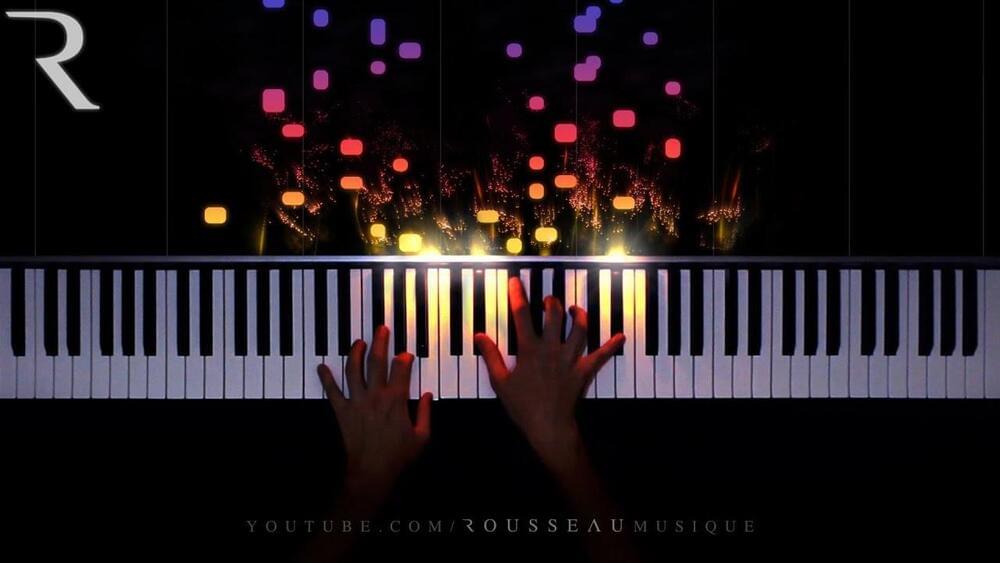– Maine Coon Central
With so many people questioning the Maine Coon’s mysterious origins, it’s not surprising that bizarre queries like, ‘Is a Maine Coon Part Raccoon?’ have been asked!

– Maine Coon Central
With so many people questioning the Maine Coon’s mysterious origins, it’s not surprising that bizarre queries like, ‘Is a Maine Coon Part Raccoon?’ have been asked!
Circa 2015
Scientists have determined how a particular gene makes night vision possible. The study focuses on a gene called nyctalopin. Mutations in the gene result in inherited “night blindness,” a loss of vision in low-light environments.
Scientists found new evidence this year that muons may behave in a way that defies existing physics. Their magnetism may be caused by a new, fifth force.

Proteins are structured like folded chains. These chains are composed of small units of 20 possible amino acids, each labeled by a letter of the alphabet. A protein chain can be represented as a string of these alphabetic letters, very much like a string of music notes in alphabetical notation.
Protein chains can also fold into wavy and curved patterns with ups, downs, turns, and loops. Likewise, music consists of sound waves of higher and lower pitches, with changing tempos and repeating motifs.
Lazzarini.
The standout feature is, of course, the arc, or “hole deck” as Lazzarini calls it, which can be customized to each seafarer’s needs. Accessible via a door at the vessel’s bow, the sprawling space is ideal for lounging and is fitted with steps down to the ocean for requisite dips.
Shape is crowned by a glass-bottom infinity pool situated on the upper deck. It allows the swimmers above to look down on those below (or vice versa). Here, you’ll also find a helipad to facilitate the comings and goings of those onboard. At the stern, meanwhile, there is a waterside beach club with a diving platform, plus a garage for toys.
Circa 2018
The birth of the world’s first “test-tube” lion cubs have sparked hope that the some of the world’s most endangered big cat species could be saved from extinction.
The male and female lion cubs were born in South Africa last week and mark the first time a successful pregnancy has been achieved through artificial insemination.
Continue reading “Test-tube lion cubs spark hope endangered species could be saved” »
“While there have been published doubts raised about the accuracy of some of this CMB data, taken at face value it appears we may not have the right understanding, and it changes how big the Hubble constant should be today,” Riess said at the time.
“This surprising finding may be an important clue to understanding those mysterious parts of the universe that make up 95% of everything and don’t emit light, such as dark energy, dark matter and dark radiation.” Given its breadth and scope, astronomers around the world have taken the findings of Riess and his colleagues very seriously. After all, in 2011 Riess had shared the Nobel Prize in Physics for the initial discovery that the universe wasn’t just expanding, but that the rate at which it was doing so was also increasing.
Erik Verlinde of the University of Amsterdam has spent much of his time since 2010 attempting to develop a totally new theory of gravity, one that explains such observations without the need to invoke the likes of dark matter and dark energy. This resulted in his theory of emergent gravity, so-called because gravity is not a fundamental force after all, but an emergent phenomenon, similar to temperature emerging from the movement of particles.
BepiColombo will fly by the planet’s night side, so images during the closest approach wouldn’t be able to show much detail.
The mission team anticipates the images will show large impact craters that are scattered across Mercury’s surface, much like our moon. The researchers can use the images to map Mercury’s surface and learn more about the planet’s composition.
Some of the instruments on both orbiters will be turned on during the flyby so they can get a first whiff of Mercury’s magnetic field, plasma and particles.
Looks kind of like a computer printer on big wheels.
We got to see Amazon’s latest gadget early — it’s the long-rumored robot.
We spent about 50 minutes with Astro. Like robots of the past (some have fizzled out; others have gone extinct like Anki’s Vector and Cozmo robots), it focuses on peace of mind in the likes of home monitoring and checking in on household members, along with providing entertainment. At the heart of Astro is Amazon’s smart assistant and artificial intelligence chops — so, yes, Alexa is on board just with an “Astro” wake word so that you can ask for the weather, a question or to go to a specific room.
Continue reading “Amazon’s Astro home robot puts Alexa on wheels — but is it worth $1,000?” »